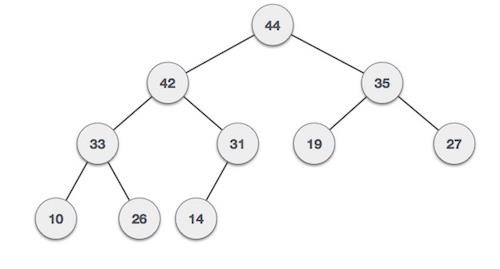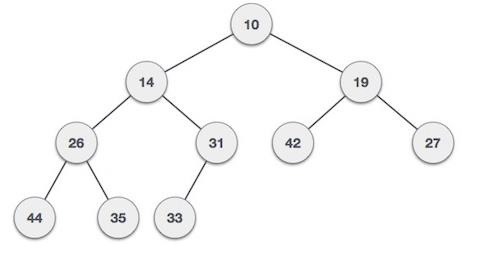
 Data Structure
Data Structure Networking
Networking RDBMS
RDBMS Operating System
Operating System Java
Java MS Excel
MS Excel iOS
iOS HTML
HTML CSS
CSS Android
Android Python
Python C Programming
C Programming C++
C++ C#
C# MongoDB
MongoDB MySQL
MySQL Javascript
Javascript PHP
PHP
- Selected Reading
- UPSC IAS Exams Notes
- Developer's Best Practices
- Questions and Answers
- Effective Resume Writing
- HR Interview Questions
- Computer Glossary
- Who is Who
Binary Heap in Data Structure
Heap or Binary Heap is a special case of balanced binary tree data structure. This is complete binary tree structure. So up to l-1 levels it is full, and at l level, all nodes are from left. Here the root-node key is compared with its children and arranged accordingly. If a has child node b then −
key(a) ≥ key(b)
As the value of parent is greater than that of child, this property generates Max Heap. Based on this criteria, a heap can be of two types the Max Heap and the Min Heap.
These are examples of Max and Min Heap respectively −



Advertisements
